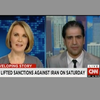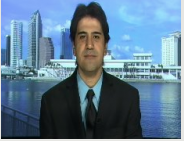Some terrorist groups attract a significant amount of media attention while others receive little or no coverage.
For example, the predominant Western media outlets devote much of their news and analysis to ISIS, an extremist Sunni group, while failing to raise public awareness about other terrorist groups.
There seems to be a symbiotic relationship between the mainstream media and ISIS. On one hand, ISIS receives the publicity it needs from CNN, Fox News, etc. On the other hand, these networks increase their ratings, viewers, readers and advertisement revenues.
There are major questions to address. Why do some terrorist groups win a large share of media attention while others do not? What are other major terrorist groups?
There are more than 250 terrorist groups around the world, with different religious and socio-political backgrounds. Roughly %25 of these groups are funded, trained or supported by the Iranian government. Other groups such as Kataib al-Imam Ali (KIA) use horrific tactics similar to ISIS. In fact, the group is known for showing videos of beheadings and burning bodies. It is backed by Iran, and originated from the Muqtada al-Sadr's Mahdi Army. Shebl al-Zaidi is the secretary-general of Kataib al-Imam Ali. He is known for his sectarian and cruel tactics.
Another militia group, known for its violent attacks is Asa'ib Ahl al-Haq. It reportedly receives approximately $2 million a month from the Islamic Republic.
First of all, media outlets and journalists seem to prefer simplicity to complexity. It's much easier to talk about the horrific acts of the Islamic State than to do research on other stealth terrorist and radical militia groups. Unfortunately, a lot of reporters are not knowledgeable about the dangers these groups pose.
For example, discussing Kataib al-Imam Ali or Asa'ib Ahl al-Haq requires an understanding of the political set-up in Iraq, Iran and Lebanon as well as the interconnectedness between Iran's Revolutionary Guard Corps and other political groups.
With the high pace and immediate demand reporters face it's easier to write about ISIS than to research all other groups.
Considered words of wisdom from an Iranian diplomat who told me: We prefer to drive at night with the light off. In other words, it is preferable to fly under the radar. It follows that while ISIS works hard to gain media attention and is adept at utilizing social media -- such as Twitter, Facebook, Youtube, etc. -- other militia groups are less likely to seek media attention.
For example, the modus operandi of Iran-backed groups is based on some of the tactics of the General Qasem Soleimani, commander of Iran's Islamic Revolutionary Guard Corps-Qods Force: conduct stealth attacks while denying responsibility.
The ultimate goal of these groups is to enter the political establishment of the state and inform decision-making from the top. Hezbollah succeeded at this in Lebanon and other Iraqi Shiite militia groups did the same on Iraq.
In addition, some media outlets view these radical militia groups as "legitimate" groups because they are funded by a nation-state or they are fighting ISIS. Many of these groups report directly to General Soleimani or Iran's Supreme Leader, Ayatollah Ali Khamenei. As a result, if a similar violent act is committed by one of these groups, the mainstream media outlets are less likely to criticize them as harshly.
Furthermore, large Media outlets are driven by a need to make a profit in order to survive as organizations. They write about topics that people are focused on, in order to attract a high number of readers and in turn advertisers.
Moreover, the nature of the crimes committed by ISIS attract interest by global media because it seems they target people outside the Middle East. For example, ISIS appears to be a threat to Americans and Europeans. People read about what they believe is a potential threat. Many Americans and Europeans feel that if an organization can carry out attacks in Paris, London, or cause mass shootings (like in San Bernandino), then they can commit these terrorist attacks anywhere.
In closing, despite the fact that there are many terrorist groups around the world committing atrocities against civilians, only a select few receive attention from the media. It is incumbent on the media outlets, reporters and journalists to make more of an effort to highlight these lesser known terrorist groups as well as to shed light on the sufferings of the forgotten people who are affected by other terrorist groups.
Dr. Majid Rafizadeh, an American scholar and political scientist, is the president of the International American Council on the Middle East. Harvard-educated, Rafizadeh serves on the advisory board of Harvard International Review. He is originally from Iran and Syria. You can contact him at Dr.rafizadeh@post.harvard.edu or follow him at @majidrafizadeh
This post first appeared on Al Arabiya.

